Understanding Why Pet Birds Dance: Insights and Implications
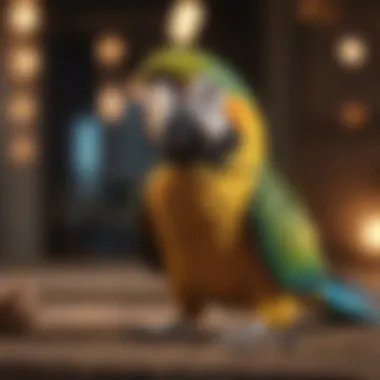
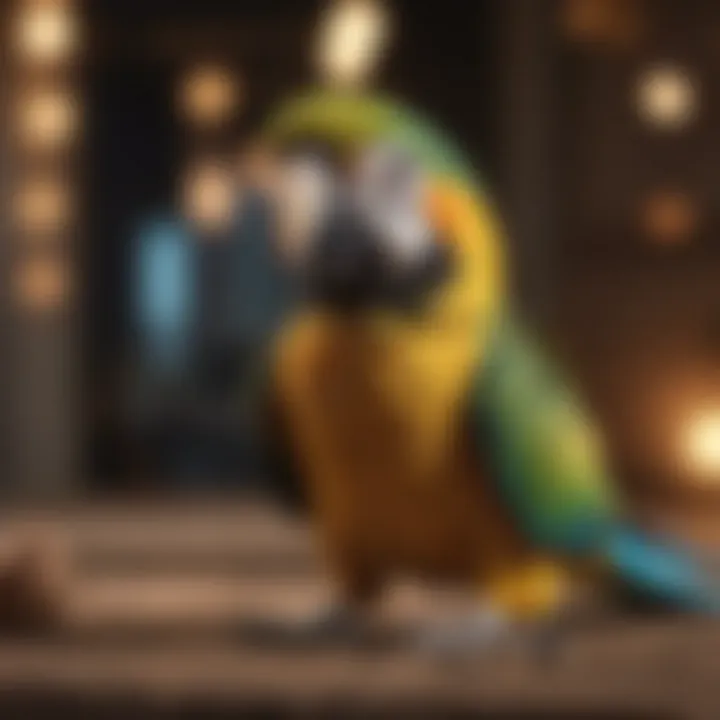
Intro
The intricate world of pet birds includes fascinating behaviors that sometimes baffle their owners. One such captivating behavior is dancing. This article seeks to demystify why pet birds dance, revealing both their underlying motivations and their significance to overall health and well-being. From instintive urges to expressions of joy, the dance of pet birds provides critical insights into their mental and emotional needs. By understanding these behaviors, pet owners can cultivate a supportive environment that nurtures their finch's innate behaviors.
Care Tips
While dancing might be a delightful observation, the foundation lies in providing comprehensive care for your feathered companions. A suitable routine directly affects health, well-being, and potential for display of natural behaviors like dancing. Different pillars of bird care focus on taking thoughtful approaches to daily routines, cage setups, hygiene, and adapting care practices seasonally.
Daily Care Routines
Establishing a consistent daily routine is essential for birds' sense of security. Birds need to have fixed times for feeding, bathing, and social interaction. This consistency cultivates comfort and encourages positive behaviors. A well-organized routine also assists in tracking any unusual behaviors that imitates changes in health or emotional state.
Cage Setup and Maintenance
A bird's cage serves as its personal haven. It should be spacious, secure, and need regular maintenance. A stimulating cage environment that includes perches of varying types and sizes will promote activity. Regular resizing of toys and rearranging cage setups encourages exploration, potentially resulting in spontaneous displays of gymnastics, such as dancing.
Hygiene and Cleaning Practices
Maintain cleanliness in the bird's habitat has immense importance. Spot clean daily while conducting deep cleans weekly to remove waste and replace soiled paper. Clean habitats deter the growth of mold and bacteria that can negatively impact lung health, affecting a bird’s well-being and its expressive behaviors.
Seasonal Care Adjustments
As temperatures shift throughout the year, so too do the requirements for keeping your bird comfortable. In warmer weather, increased hydration is necessary, while colder days may call for more cuddly environments. It is crucial to adjust care tactics to maintain optimal comfort so that changes in behavior, such as spontaneous dance moves, occur without any distractions stemming from discomfort.
Behavioral Insights
Understanding dancing necessitates insights into overall bird behavior. Pay attention to your bird’s body language since it conveys much more than mere words can. Consider common behavioral issues that bring stress, where positive reinforcement techniques can guide to better habits and foster the creature’s need for social interaction.
Understanding Bird Body Language
Birds communicate through their body language including feather fluffing, wing extensions, and movement through space. Detailing these emotions along with dance helps owners decipher the messages their birds send.
Common Behavioral Issues and Solutions
Some behavioral issues arise from boredom or anxiety. Proper training using positive reinforcement techniques can redirect these behaviors. Update toys routinely or develop strategies to nurture social interactions will work wonders.
Positive Reinforcement Techniques
Positive reinforcement, be it petting or offering a rewarding treat, enhances attachment and trust. Birds respond well to encouragement. Their inclination to dance could be developed further through this nurturing approach.
Social Interaction Needs
Birds are inherently social creatures and thrive on interaction with others. Regular interaction can elicit behaviors like dancing, singling out joy or excitement when engaged with.
Nutrition Guides
An adequate diet plays a vital role in your bird’s general health and, by extension, its likelihood to express different behaviors. This section explores essential diet components and presents information on feeding strategies tailored to multiple species in the scope of their needs relative to performance.
Essential Diet Components
Make an effort to provide a balanced diet that combines seeds, pellets, fruits, and vegetables. Engage with an avian veterinarian for guidance on nutritional needs specially designed for various species, from parakeets to cockatoos.
Safe and Toxic Foods
Notice what foods are safe and which ones are toxic to your bird. Foods like chocolate, caffeine, and avocado often show ill effects. Eliminate these from your diet and keep your bird energy high through safe feeding options.
Supplements and Treats
Consider providing supplements or treats when forced through special diet suggestions. Offer these in moderation not to upset balanced diets but enrich experiences in wipe forms, adding positive dimensions to their care.
Feeding Strategies for Different Species
Not all birds share dietary needs. Rats’ and pigeons' requirements vary greatly; owners should always check reputable avian resources or consult their attorneys to educate in proper strategies.
Wellness and Health
Following the daily care led down the path away from understanding dance, owners must stand prepared to field important wellness queries. Make this part of your general caregiver routine, emphasizing preventive care aligned with mental and emotional health for their remarkable field of actions, like dancing.
Routine Health Checkups
Avian health exams are invaluable if circulated annually. A veterinarian plays an integral part in understanding signs of ill health, whilst twisting owners’ focus to other aspects of overall wellness. Regular visits can furnish relevant insights to improving joy-transmitting habitual movements.
Identifying Symptoms of Illness
Spend all time observing your birds for shifts acting out of sorts—fluffed feathers or reduced social interaction often indicate further pursuit is necessary.
Preventative Care and Vaccinations
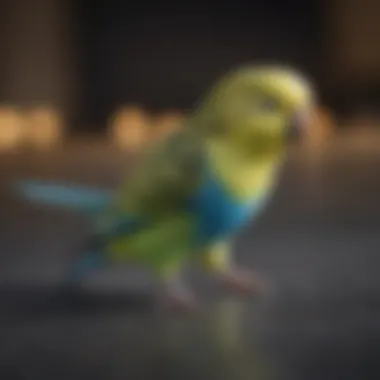
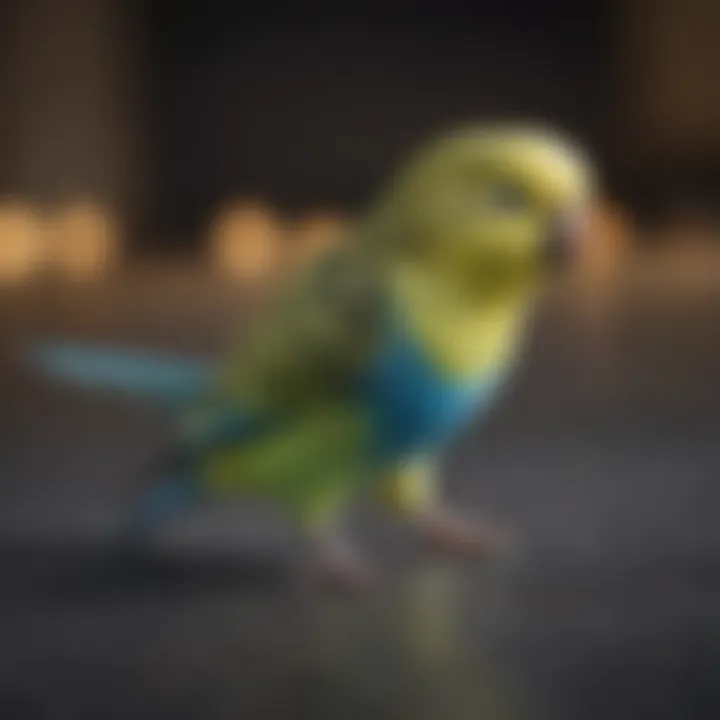
Vaccination shields your feathered family from commented diseases. Consult your veterinarian on regulations and common occurences, framing preventative steps within overall development to foster social, vocal, or performance outcomes like dancing
Mental and Emotional Well-being
Birds' mental and emotional statuses uplifted permit fuller expressions—including dance—proving well-being improvement prompted observing engaged play and routine social bonds
Enriching Activities
Finally, it resonates with utilizing toys that promote engagement or stimulating activities prompting joyful interactive observations. Becase behavioral diversity leads entice many captive birds to dance based on feelings bred from activity checking.
Toys and Playtime Ideas
Introduction of chewable topical items enhances involvement, flexing muscles invokes expressive clinical gifts (or dance). Include expandable spheres, build segment avenues of active spaces introducing regularly – a succinct balance enriched toward try to foster converse-theft measures and anticipating play stimulating turnout like continued dance.
Training and Tricks
Bird training engages with understanding innate abilities plus covers tricks that resonate from owner connections adding personal depths benefitting thrilled sessions promoting dance expression unmistakability.
Outdoor Activities and Interaction
Consistent exposure outdoors bear gifts such as novel wigs prompting amplified coax humorous fulfillment driving bold or vivid impressions across contingency via experimental play churning success over conditioning inviting likely dances lifetime.
DIY Projects for Mental Stimulation
As bird species vary widely recognizing improvisation of conquered parable collectively across diverse community repositories can creative churn additional contributions balancing well within interactive author baza-Berati—an exercise gallantly tapping full avenues accurately.
Understanding your pet birds’ dance insights nurtures enriched adaptation to times cunes partially preserved poet-seeking confines bringing joy throughout every evening haven through collaborated breeding crops fitting understanding melodious states conducive always toward evolution spark beauty diving deep furthermore leading always recreative undertake lively aimed vibrant expression-shifting villains briefly peek outside cultural habits 'greater having fun' going joyous moods illuminating youthful progress.
Resources: For more information, check out Wikipedia, Britannica, Reddit, and Facebook.
Preamble to Bird Dancing
Bird dancing is a captivating aspect of avian behavior that deserves thorough examination. It is essential for bird owners to understand this behavior as it plays a significant role in communication, socialization, and emotional expression in birds. Knowledge about dancing helps guardians enhance their pets' living conditions. This, in turn, fosters a positive and fulfilling environment for pet birds.
Overview of Avian Behavior
Understanding avian behavior is crucial for anyone who owns a pet bird. Birds are inherently social creatures that rely on a variety of methods to communicate. Dancing is one such method, allowing birds to showcase their mood, intentions, and overall health. By observing the movements of birds, especially during their danc, owners can glean vital insights into their pets’ psychological states and needs.
Recognizing movements as a part of natural instinct shows that these creatures are not just pets; they are sentient beings with a rich tapestry of behaviors. Owners who grasp these nuances can bond more effectively with their birds and can construct interactive habitats that cater to their physical and emotional needs. This interaction cultivates a cherished connection between birds and their humans, enhancing overall well-being.
Significance of Dance in Animal Kingdom
Dance in the animal kingdom serves several purpooses. For birds, it isn’t merely for display; it plays an essential role in mating rituals, establishing territory, and social hierarchies. Studies have shown that dance demonstrates vigor and fitness, traits that are attractive in potential mates. This signaling often translates into evolutionary advantages, showcasing how dance enriches not just communication among birds but their individual chances of reproductive success.
For many species, dance operates within a social structure. By understanding this behavior, we gain valuable insights into the agility and intricacies of life among birds. An appreciation for dance as communication underscores its universal importance across species and reinforces the value of every motion exhibited by these charming creatures. The functions extending beyond mating rituals lead to profound implications for conservation and habitat enhancement, urging us to respect and promote natural behaviors whenever possible.
The Biological Basis of Dancing
Understanding Avian Nervous System
The avian nervous system plays a critical role in how birds perceive, react, and express behaviors, including dance. This system coordinates intricate movements and facilitates bird communication, making the connection swift and effective.
Birds possess a unique arrangement of the neural structures, especially in the forebrain. This part of the brain processes social interactions, aiding in understanding their environment. The brain integrates various signals, allowing birds to exhibit charming dancing behaviors. Factors like hormone levels also influence movement, serving as responses to environmental shifts.
By being aware of such functions, bird owners can better appreciate their pets’ dancing techniques. Observing how these neurological systems contribute can influence how owners interpret behavior. It creates the cognitive bridge between animal instinct and learned behavior, highlighting an enriching interaction.
Role of Instincts in Behavior
Instincts are foundational in explaining dance among birds. These inbuilt behaviors respond to evolutionary urges and environments. Birds inherit a range of instincts that are essential for survival and social bonding. For example, without courtship rituals often displayed as dance, mating chances may decline. This display embodies not just attraction but also species affirmation.
In social structures, instincts lead birds to dance not merely for fun, but as actual mechanisms of social bonding. When birds dance together, it strengthens group coherence, helping maintain hierarchies and territories. Recognizing the role of these instincts informs owners about the importance of social interaction and might motivate efforts in reshaping the birds' living environments for sustained happiness.
Like many animals, birds communicate through movement. Dance acts as an essential bridge for emotional expression, reinforcing relationships and environmental navigation.
Understanding these fundamental elements is vital for pet owners. It offers insight into nurturing an enriched habitat tailored to the unique biological needs. Engaging with their dancing habits is key to fostering a loving connection that benefits both pet and owner.
Social Factors Influencing Dance
Understanding the social factors influencing dance in pet birds is crucial for grasping why these behaviors manifest. Pet birds are highly social creatures, and their dance behaviors are shaped by interactions with their environment and community. Recognizing the dynamics at play helps bird owners enhance their pets’ lives.
Interaction with Other Birds
Birds often rely on each other for various aspects, including communication, hierarchy, and mating displays. Interaction with fellow birds plays a significant role in encouraging dance movements. In a flock setting, observing others can trigger instinctual responses and mimicry.
Bird watch has revealed different styles of dancing depending on the species. For example, Parrots often dance energetically when paired with another bird, while finches might partake in more subtle gestures. Birds learn to communicate through these performances, making dance a language of social interaction.
Adjustments in environmental factors, such as the presence or absence of a companion bird, can also influence this behavior. A pet bird might dance more vigorously with an active partner than when alone, showing how social facilitation behaves here.
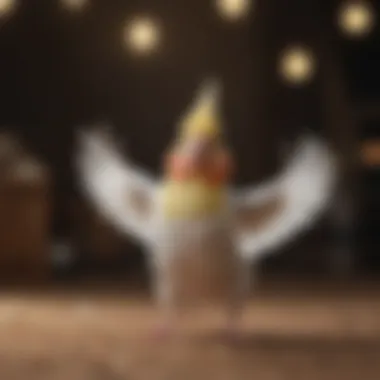
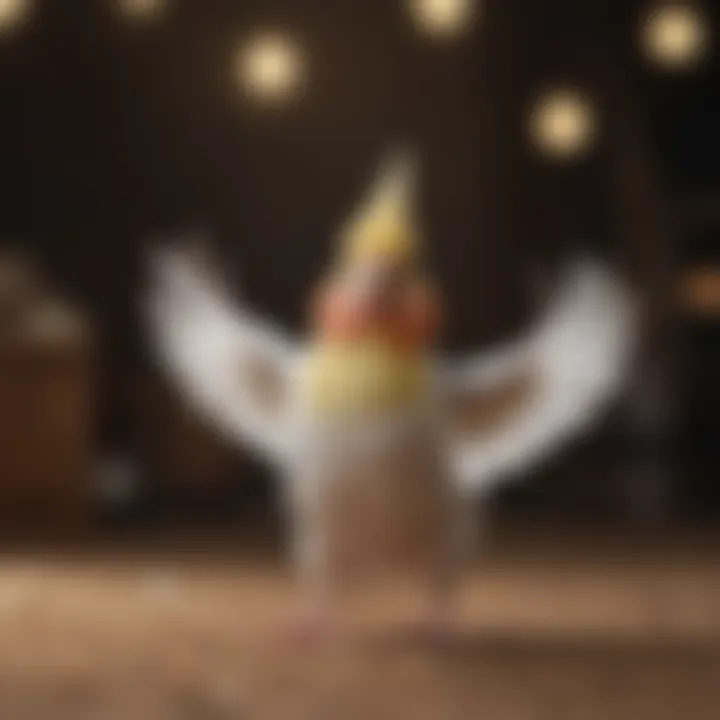
Here are key points relating to interaction:
- Mimicry: Birds observe and replicate the dance of others.
- Reinforcement: Positive outcomes from dances lead to repetitive behaviors.
- Competition: Birds may dance to establish social dominance or attract mates.
Through these modalities, it is crucial to foster environments that provide opportunities for these interactions.
Human-Bird Interaction
The bond between a bird and its human caretaker influences dance behaviors. Pet owners have a unique position in shaping how birds express themselves. Engaging with a bird in meaningful ways leads to better social interactions and a higher propensity to dance. Birds often respond to human presence through vocalizations and movements; oftentimes displaying intricate dances.
Moreover, routines and activities designed to include users can invite birds to showcase performance qualities. For example, playing specific music genres that align with their rhythm can encourage patterns mimicked from their humans, and that can stimulate their desire to dance.
Important aspects in this area are:
- Social Bonding: High attachment with the owner can spark increased displays and communication.
- Encouragement: Owners can motivate dancing by responding positively to such displays, which assists in affirmative reinforcement.
- Predictable Routine: Establishing a routine where interaction is scheduled often amplifies eagerness to perform challenging moves.
As lambdas of species reconvene around humans, it is understood that active engagement creates more vibrant dance life. The more these birds perceive their environments—including human presence—as encouraging, the more vibrant their dance behaviors will become.
Bird dance is intricate way of exhibiting social dynamics, which owners actively influence through engaged care and responsiveness.
By understanding these elements, bird owners can truly unlock patterns in their pet’s dance, leading to healthier and happier lives Exposing birds to social opportunities facilitates natural, engaging dance practices that reflect their instincts.
Types of Dance Movements
Dance among pet birds is not merely a delightful form of entertainment; it serves several critical functions within their behavior. Understanding the types of dance movements can offer insights into the emotional states of birds, their need for communication, and their social interactions. This section explores two primary facets: body language signals and vocalizations accompanying dance.
Body Language Signals
Body language plays an essential role in how birds communicate. Observing the movements of your pet bird can reveal its emotional state and intentions. Here are some points to consider:
- Positioning and Movements: Birds often exhibit distinct movements when they feel excited or threatened. For instance, a bird that raises its wings or puffs up its feathers might be trying to display dominance or assertiveness. Analyzing these signals helps in building stronger bonds with your pet.
- Movement Speed: Fast and energetic movements usually indicate happiness or eagerness. In contrast, slow or cautious movements can often signal fear or discomfort. Recognizing these trends will assist bird owners in responding appropriately to their pet's needs.
Understanding your bird’s body language can enhance its well-being. It fosters communication and mutual respect between the owner and the pet.
Vocalizations Accompanying Dance
Vocalizations can provide context to a bird’s dance movements. The sounds that a bird produces often relate closely to its emotional state and can enrich the dancing experience. Key aspects include:
- Various Sounds: Birds typically combine different calls or whistles when they dance. Those vocalizations can range from soft chirps to loud squawks. The nature of the sounds can indicate their level of comfort and how they express affection.
- Tune Patterns: Similar to music, birds have been known to vary their vocal tunes to accompany their dances, making their behavior an interesting blend of sound and movement. Identifying these patterns can give owners valuable information about how their bird feels in different situations.
Dance, therefore, encapsulates more than just movement; it weaves together elements of body language and sound. Understanding these can greatly help pet bird owners foster an environment that promotes well-being and communication.
Emotional and Environmental Influences
The emotional and environmental influences play a critical role in understanding why pet birds engage in dancing behavior. Various conditions and sensations experienced by birds can either enhance or inhibit their dance movements. Birds are responsive creatures, reacting not just to their surroundings but also to social situations and emotional states. Catering to these influences fosters an engaging and stimulating environment for the birds.
Impact of Stress and Anxiety
Stress and anxiety are well-known diminishing factors affecting bird behavior. When birds experience these negative emotions, their instinctual behaviors, including dancing, may deteriorate. Reasons for stress can include changes in environment, aggression from other pets, or a lack of stimulation. Similarly, disruption in routine may lead to anxiety, prompting birds to withdraw from social interactions. Understanding these triggers is key for bird owners, as minimizing them leads to greater opportunities for dance. Healthy, content birds tend to express themselves with a higher desire to dance, which reinforces the positive connections between reduced stress and expressive behavior.
Creating Positive Experiences
Enrichment Opportunities
Enrichment opportunities serve as pivotal tools in encouraging dancing among pet birds. They refer to activities and objects thoughtfully introduced to stimulate a bird's mind and body. The key characteristic of enrichment is maximizing the cognitive and physical engagement of birds, making it a vital aspect in their daily lives. Common types of enrichment include toys, puzzles, and foraging activities. The unique feature is the active participation required, allowing birds to solve problems, often leading to displays of instinctive movements like dancing.
The advantages are clarity; enrichment motivates birds to interact with their environment. It instills inherent curiosity which triggers natural behaviors, including dancing. Neglecting enrichment can lead to loneliness or boredom, dampening the natural inclination for expression. Therefore, implementing efficient enrichment activities is a strategic approach in enhancing a bird's overall well-being and encouraging joyful dance.
Safe Spaces for Expression
Safe spaces for expression refer to physical areas where birds can engage freely without harmful influences. These areas play a significant role in providing a haven for pets to dance and display unrestrained behavior. A critical element of safe spaces is the lack of threats, whether from other pets or overwhelming human activities, thus creating a stress-free zone.
This concept is highly beneficial, as birds need a sense of security to thrive. When owners create a designated spot that promotes comfort, birds are more likely to exhibit personality through dance. Important aspects of crafting these areas include thoughtful placement of cages away from busy areas and providing cozy hiding spots. More importantly, safe spaces should facilitate joy rather than induce stress. A lack of such spaces curtails self-expression, leading to underwhelming interactive experiences.
Establishing an enriching environment that mitigates stress and fosters emotional well-being is essential for prompting birds to connect through dance.
Bird Dance Across Different Species
Understanding the topic of bird dance across different species is crucial for pet bird owners. It sheds light on distinct behaviors and communication styles. Every bird species dances in its unique manner, shaped by their evolutionary history and social interactions. Recognizing these differences can greatly enhance the relationship between birds and their owners.
Bird dancing is not merely visual amusement. It serves vital purposes, including courtship displays, territory marking, and social bonding. Learning about these movements enables bird owners to create a more supportive and happy environment for their pets. Delving into how various species, such as parrots, finches, and canaries dance allows for a well-rounded understanding of avian life. This insight can lead to improved care and emotional well-being for those feathered companions.
Parrots and Their Unique Dance Styles
Parrots possess a diverse range of dance styles. Those behaviors reflect their need for social interaction and mimicry. Parrots, such as African Grey and Severe Macaws, often move rhythmically to sounds in their environment. Their ability to imitate human dances is known and often charming. This behavior ties back to their natural instincts as communicators within flocks in the wild. Instead of simple movements, parrots can display complex choreography as a form of expression.
Parrot dancing often includes:
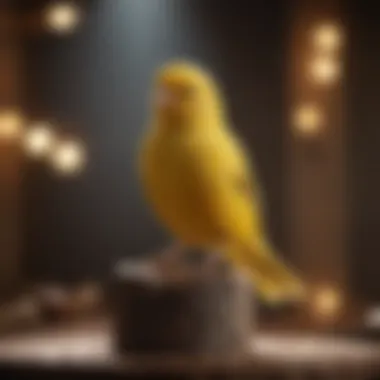
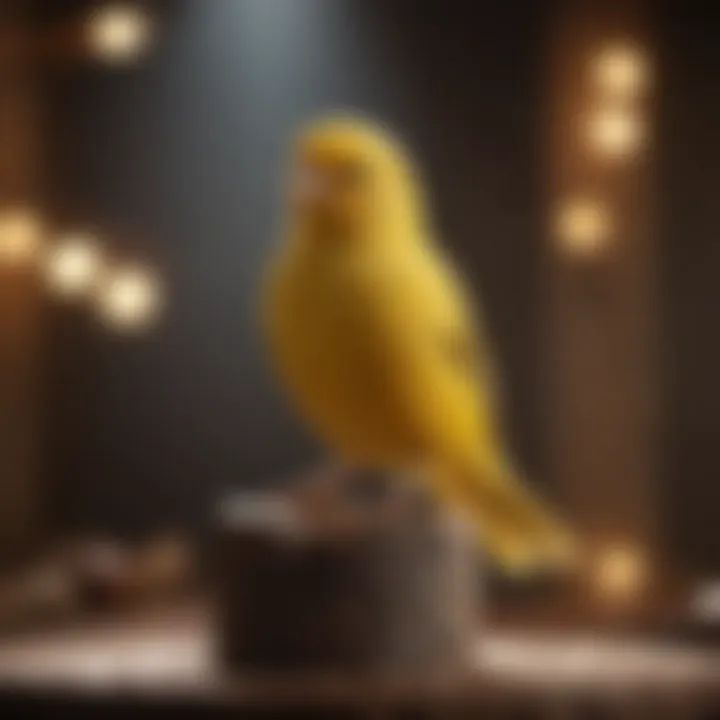
- Head bobbing
- Wing flapping
- Body swaying
- Foot tapping
These movements signify excitement, contentment, or even readiness for play. Bird owners should recognize these dances as forms of communication, reinforcing social engagement in their interactions with their pets.
Finches and Their Social Displays
Finches exhibit different styles of dancing influenced by social hierarchies and territory interactions. Unlike parrots, finches often dance during mating seasons. Their actions include intricate flights and special calls. These displays help attract mates and establish dominance among peers.
Conventional finch dance movements typically comprised of:
- High-speed chases
- Fluttering and circling
- Specific chirping alongside physical movements
These behaviors are social cues. Observing these can be joyful for owners and important for stimulating social environments in captivity.
Canaries and Singing-Dancing Correlation
Canaries present a fascinating proof of the relationship between song and movement. They infuse their behavior with musicality. While singing, they employ diverse movements risking vibrations through their tiny bodies. Both aspects enhance their dance.
The correlation arises as:
- They exhibit movements synchronized to their singing
- Dance can increase during vocal peaks,
This adds a layer of expression for canaries, giving them a uniqueness among bird species. For owners, aiding them to sing might bolster their happy unpredictability in behavior.
Always consider what specific breed you have and equip them with the tools to participate in their invigorating shows.
Behavioral Insights for Bird Owners
Understanding bird dancing behavior is crucial for every bird owner. It unlocks the potential for a more fulfilling relationship between humans and their feathered companions. Recognizing the nuances of bird behavior allows owners to decode messages their pet might be expressing through dance. This deepens communication and mitigates misunderstandings. Bird owners are often eager to connect and create an enriching environment. Recognizing dance as a voice offers a path to precisely that.
Recognizing Dance as Communication
Identifying Social Cues
Dance serves as a critical communication tool among birds. Each unique movement reflects an array of social influences and environmental responses. When birds dance, they convey enthusiasm, stress, or even happiness. Observing these behaviors helps owners understand what their birds require.
Key characteristics of social cues include:
- Variation in movements: A bird's choice of dance can indicate its mood. Eagerness may result in high-energy movements, while more subdued gestures may signal unease.
- Timing and context: Understanding when a bird dances gives insight about its emotional state. Timing often correlates with triggers like human attention or the presence of other birds.
What makes identifying social cues so beneficial is better understanding a bird's needs. Increased knowledge allows owners to take preventative actions if stress signals arise so enhancing the bird's overall well-being.
Responding to Bird Messages
Responding effectively to a pet bird's messages can significantly enhance the bond between the owner and bird. This occurs when owners acknowledge and interpret the meaning behind dancing behaviors.
Key hallmarks of recognizing dance messages include:
- Content mindset: Owners must maintain openness and attentiveness to how their birds express themselves. Such a mindset fosters an environment of trust.
- Feedback loop: Once an owner understands and responds positively to dance behavior, birds often display more vibrant movements as a show of trust and contentment.
By understanding these messages, bird owners facilitate better conditions for a positive living environment. However, one must consider that repeated interpretations require ongoing observation. If misinterpreted, a bird's behavior may lead to misunderstandings. Responding to dance not only enhances perpetuity but allows owners to enrich their pets’ lives considerably.
Encouraging Dance Through Interaction
Encouraging bird dance through interaction cultivates a dynamic relationship between pet and owner. Engaging often gets a bird more involved, inspiring natural dancing instincts that align with their social needs.
Effective methods to encourage interaction may include:
- Creating routines: Birds appreciate set times for play and socialization. Consistent interaction habits signal to birds when is the right time to dance, sparking enthusiasm.
- Music engagement: Playing of certain types of music tends to stir movement and influence a bird's natural desire to dance. Care must be taken in selecting appropriate rhythmic tunes.
Overall, these methods permit owners to significantly engage and develop overall socio-emotional development in their birds. Not only does this create a satisfying atmosphere for pets, but it also deepens the bond within the pet owner relationship.
The End: The Importance of Dance in Avian Life
Dancing is not just a simple act of movement for birds; it carries deeper significance in their lives. This section underscores the key role that dance plays in avian interactions and well-being. Recognizing its importance can greatly benefit bird owners hoping to understand their pets better.
Dance behaviors can indicate various emotional states, serve to strengthen bonds, or help in social hierarchies. For many bird species, it is a species-specific mating ritual focusing on communication. More than mere entertainment, such behaviors are crucial for maintaining a bird's mental health. By understanding dance as a multifaceted aspect of avian life, owners can create a nurturing environment for their feathered companions.
"Supporting dance behavior promotes consideration of both physical and emotional health in pet birds."
Summary of Key Insights
The exploration of pet birds' dance behavior reveals several essential points:
- Communication: Birds use dance to express emotions and intentions.
- Social Dynamics: Dance plays a critical role in the establishment and reinforcement of social bonds.
- Well-being: Engaging in dance contributes positively to a bird's mental health, reducing stress and enhancing happiness.
- Physical Activity: Dancing helps maintain physical fitness, which is vital for longevity and overall health.
Each insight highlights how these natural behaviors hold value not only for birds themselves but also for their interactions with owners. Understanding these aspects enriches cooperation between birds and their caregivers.
Recommendations for Bird Owners
To create an environment that encourages dance among pet birds, owners should consider the following:
- Encouragement Through Interaction: Actively engage your bird during playtime. Show enthusiasm when they dance, reinforcing their behavior positively.
- Environment Matters: Create a space that encourages movement. Climbing structures and perches at varying heights can stimulate birds to share their dance.
- Social Opportunities: If your bird is social, fostering interactions with other similar birds can lead to spontaneous dance behavior, contributing to a fulfilling social environment.
- Provide Enrichment: Offer toys and various forms of stimulation enriching their everyday life. A distraction also promotes exploration of dance movements.
- Maintain Calm Atmosphere: Ensure surroundings remain peaceful and secure to avoid causing stress, as fear may stifle dancing behavior.
Properly attending to these recommendations can lead to a more enriched life for your pet, creating a dynamic and healthy balance that stresses the significance of dance in their existence.















